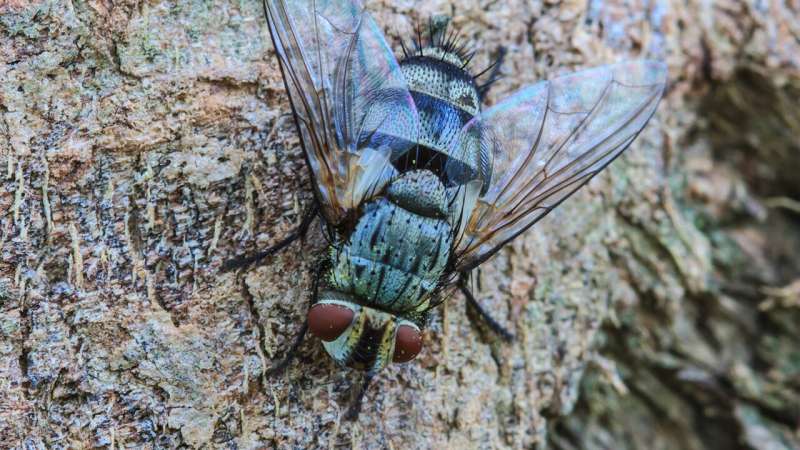This article has been reviewed according to Science X's editorial process and policies. Editors have highlighted the following attributes while ensuring the content's credibility:
fact-checked
peer-reviewed publication
trusted source
proofread
iDNA from flies used to track native species across WA's wheatbelt

Researchers from Curtin University have collected iDNA from flies to track the movements of Australia's native species across the Western Australian wheatbelt, with hopes to improve future conservation efforts in the region.
Published in the journal Conservation Biology, the research team found that native animals, such as the echidna, numbat, woylie and chuditch, were predominantly located in conservation reserves and not across the wider wheatbelt landscape, compared to invasive species like foxes and feral cats which were found across all areas.
Senior researcher and co-author Associate Professor Bill Bateman, from Curtin's School of Molecular and Life Sciences, said native mammal populations were declining at alarming rates and there was an urgent need to monitor and protect their well-being.
"It is essential to monitor the distribution and movements of animals so we can identify which populations are most at risk, which ones are declining, and which ones are on the brink of extinction. Tracking wildlife through alternative techniques, such as camera trapping and audio recording, can be difficult, costly and take several weeks to gather data," Associate Professor Bateman said.
"Using iDNA (invertebrate-derived DNA) collected from carrion flies can be much more effective as there is a greater population of flies in Australia, they can travel longer distances, they commonly interact with animals, their feces, or carcasses and you can gather data much faster—sometimes in less than a week.
"Over the period of our study, we estimated that individual flies were only moving just over half a kilometer. Using this information coupled with the iDNA technique, we were able to identify that native animals were only using conservation reserves, which means in order to ensure they have the best possible chance of survival, we need more of these reserves across the region, ideally with corridors between."
Lead researcher Dr. Kristen Fernandes, who completed the work as part of her Ph.D. at Curtin's School of Molecular and Life Sciences and is now based at the University of Otago, said conservation reserves were introduced to help prevent mammal population declines.
"These reserves are particularly important in the wheatbelt region as the landscape has been severely fragmented, with more than 93% of the natural vegetation in the area being replaced with exotic grasses and cereal crops," Dr. Fernandes said.
"Using iDNA techniques can give us insight as to which animals are using the reserves, if the surrounding areas are suitable to the species, and which predators are in the area.
"Further research is needed to fully assess the impact of this technique across larger landscapes and with a wider range of animals, but these findings would be beneficial to researchers and conservationists who are invested in protecting Australia's native mammals."
More information: Kristen Fernandes et al, Use of carrion fly iDNA metabarcoding to monitor invasive and native mammals, Conservation Biology (2023). DOI: 10.1111/cobi.14098
Journal information: Conservation Biology
Provided by Curtin University


















